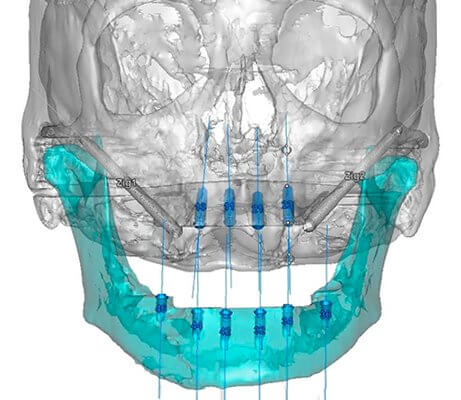In the field of implantology, one of the greatest advances is computer-guided surgery, that allows measurements of maximum accuracy and virtual placement of implants before placing them on the patient, resulting in better functional and aesthetic results .
The process of guided surgery begins with the combination of images from an intraoral and cranial scanner, with which an exact three-dimensional model is created that allows the mouth to be mapped to the millimeter, with minimal radiation. Once the 3D model is obtained, the surgeon can simulate the operation in the computer, and place the implants in the optimal position to achieve perfect aesthetics and function.
Once these measurements are taken, a surgical splint is created as a template, which reproduces with total accuracy the position of the implants. These splints serve as a guide to access the gum without opening it, thanks to a series of holes located in the exact position where the implants must be placed, and allowing only drill to the pre-established depth. This allows for a minimally invasive surgery, without lifting the gum or giving stitches, in most cases.
Another advantage is that the precision of virtual planning allows avoiding delicate areas such as the dental nerve or the maxillary sinus, while optimizing surgery time: since the movements are planned in advance, surgery time gets considerably reduced; thus, an intervention that used to take between 2 to 3 hours, can be carried out in 30 to 45 minutes.
For the patient, a less invasive and shorter surgery translates into a more comfortable postoperative period, as there are no cuts or stitches, in addition to the fact that the implants are placed with the maximum accuracy, with unbeatable functional and aesthetic results.








